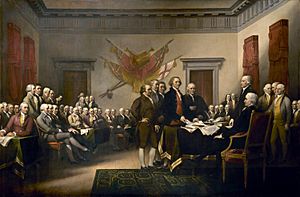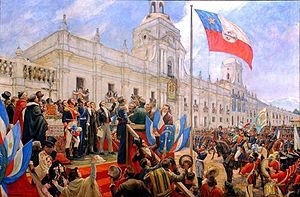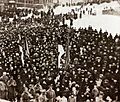Independence facts for kids

Independence means being free and not relying on others. It's about being strong enough to manage on your own. This idea can apply to people, groups, or even entire countries. When we talk about countries, independence often means they have their own sovereignty or autonomy. This means they can govern themselves without another country telling them what to do.
A country becomes independent when it is no longer controlled by another nation. Sometimes, countries gain their independence through a war. For example, the United States fought the British Empire in the American War of Independence to become a separate country. Other times, countries gain independence peacefully. Canada and Norway are good examples of countries that became independent without a war.
Sometimes, other countries help a nation gain its freedom. During World War II, for instance, the Allies helped many countries break free from the control of the Axis powers. However, attempts to gain independence are not always successful. They can sometimes lead to difficult situations like a civil war.
Recent Independence Movements
Many countries have become independent in recent history. Singapore became independent from Malaysia in 1965. One of the newest countries to gain independence is South Sudan. It became a separate nation in 2011.
Other countries that gained independence not long ago include:
- Bosnia and Herzegovina in 1992
- Eritrea in 1993
- East Timor in 2002
Some countries still have political groups that want their nation to become independent. For example, the Scottish National Party (SNP) in Scotland wants Scotland to be an independent country. The Puerto Rican Independence Party (PIP) wants Puerto Rico to become independent from the United States. These parties work to achieve their goals through political discussions and elections.
Related pages
Images for kids
-
Thirteen British colonies on the east coast of North America issued a Declaration of Independence in 1776
-
The Finnish Senate of 1917, Prime Minister P. E. Svinhufvud at the head of table. The Senate declared Finland independent on 4 December 1917, and it was confirmed by parliament 6 December 1917 which became the Independence Day of Finland.
-
Celebrating of the Estonian Declaration of Independence in Pärnu, Estonia on 24 February 1918
See also
 In Spanish: Independencia para niños
In Spanish: Independencia para niños






